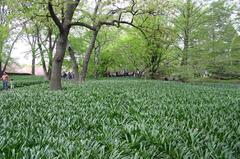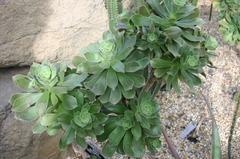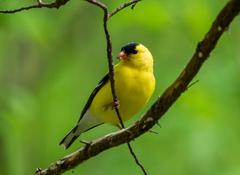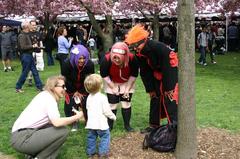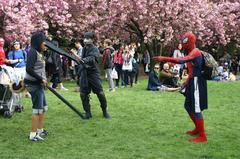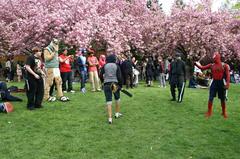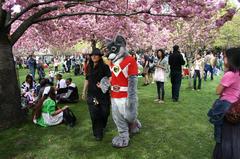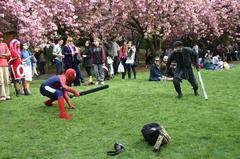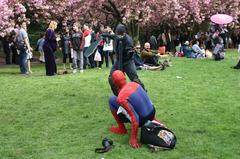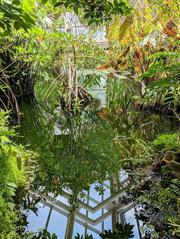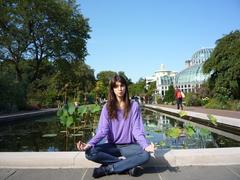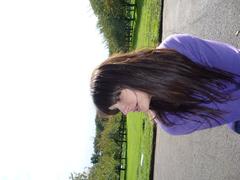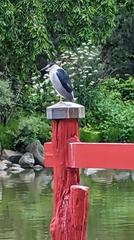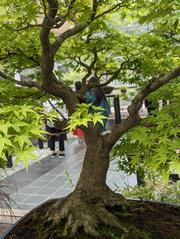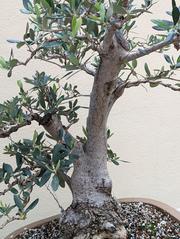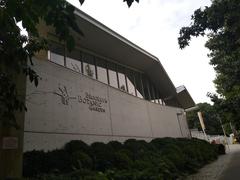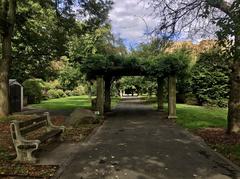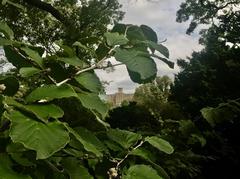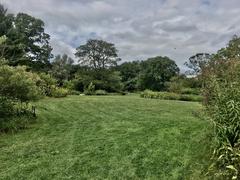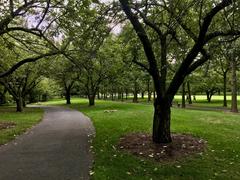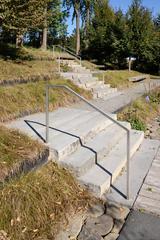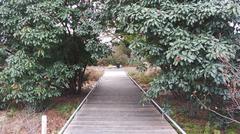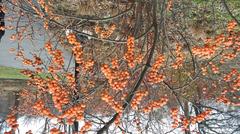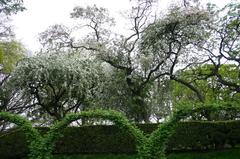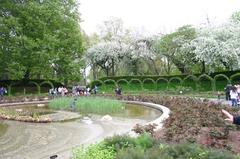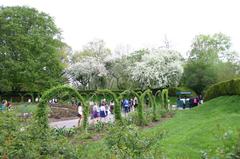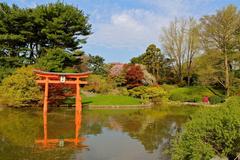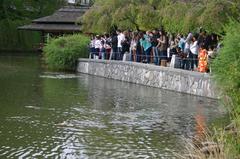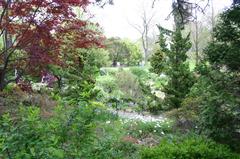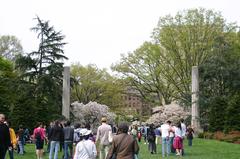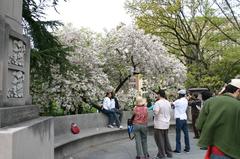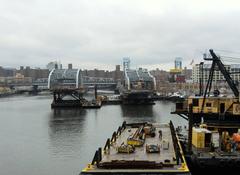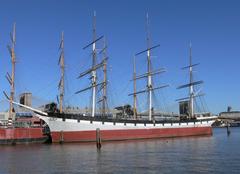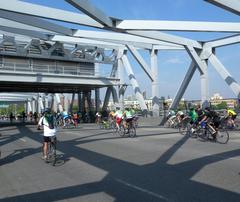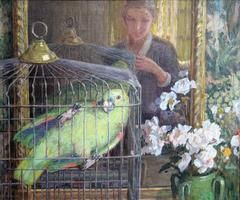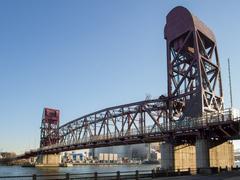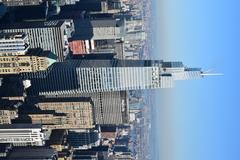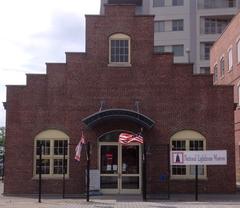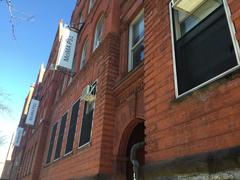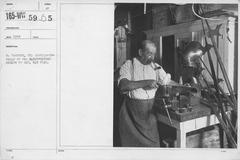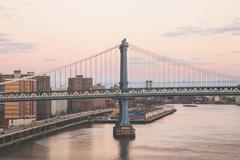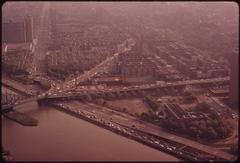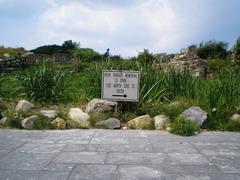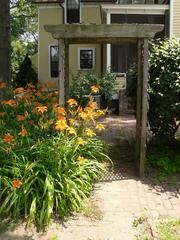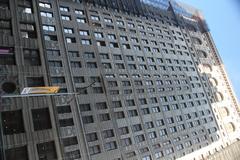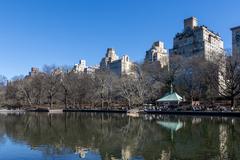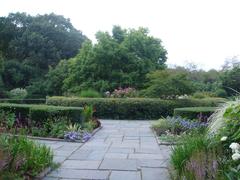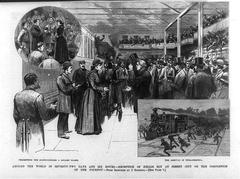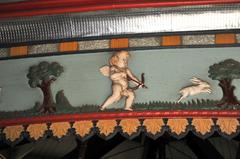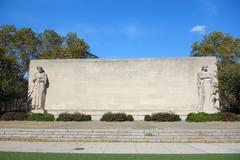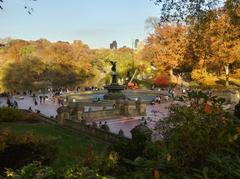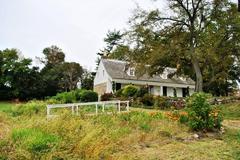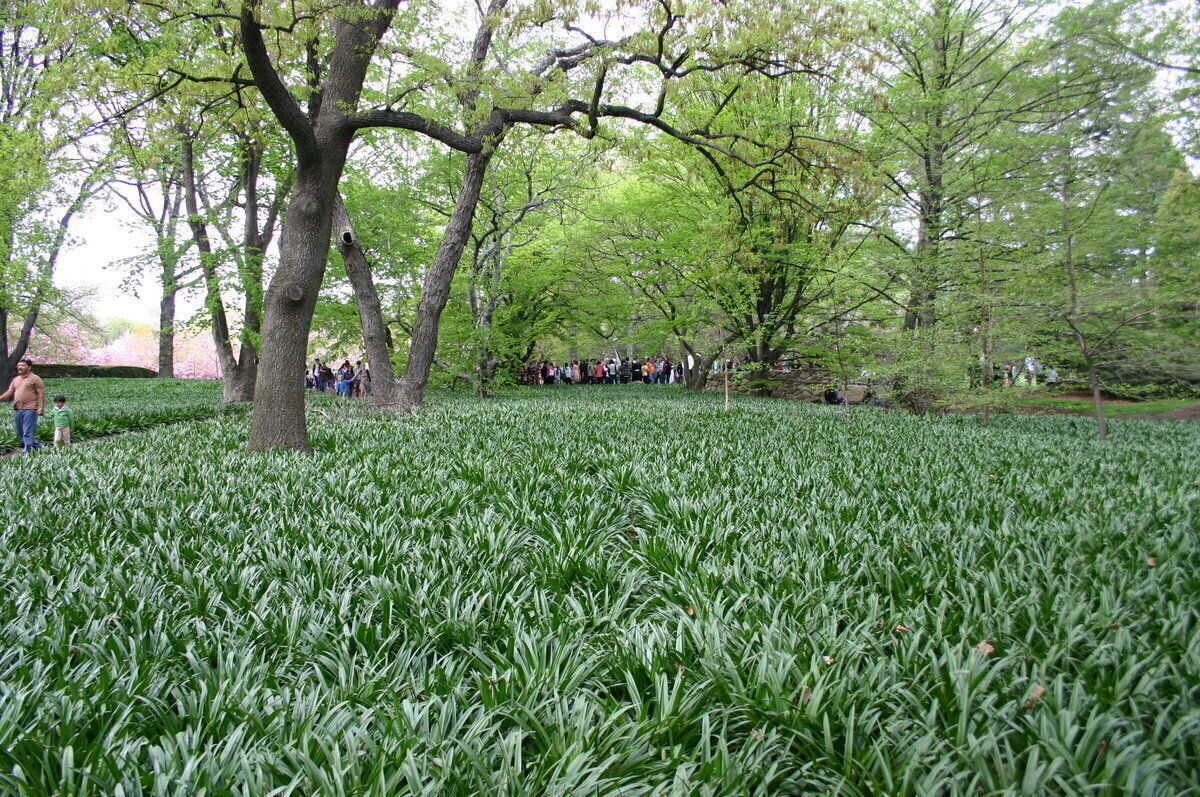
Comprehensive Guide to Visiting Brooklyn Botanic Garden, New York City, United States
Date: 17/07/2024
Introduction
The Brooklyn Botanic Garden (BBG) is an urban oasis in the heart of Brooklyn, New York, offering a serene escape from the city’s hustle and bustle. Established in 1910, the garden spans 52 acres and is renowned for its diverse plant collections, beautiful landscapes, and historical significance. The BBG was created as part of the City Beautiful movement, aiming to introduce green spaces to urban environments and provide city dwellers with a peaceful retreat. Over the years, the garden has grown and evolved, becoming a vital part of Brooklyn’s cultural and natural heritage (Brooklyn Botanic Garden).
The garden’s rich history is marked by significant milestones, such as the opening of the Native Flora Garden in 1911, the Japanese Hill-and-Pond Garden in 1915, and the Steinhardt Conservatory in 1955. The BBG also plays a crucial role in environmental conservation, with initiatives like the Water Conservation Project and the Plant Collections Network. Additionally, the garden is a hub for cultural events, educational programs, and community engagement, attracting visitors from around the world (NYC Parks).
This comprehensive guide aims to provide visitors with all the information they need to make the most of their visit to the Brooklyn Botanic Garden, including details on visiting hours, ticket prices, travel tips, guided tours, dining options, and nearby attractions. Whether you’re a nature enthusiast, history buff, or simply seeking a tranquil escape, the BBG has something for everyone.
Table of Contents
- [History of Brooklyn Botanic Garden](#history-of-brooklyn-botanic-gardenhistory-of-brooklyn-botanic-garden)
- [Founding and Early Years](#founding-and-early-yearsfounding-and-early-years)
- [Development and Expansion](#development-and-expansiondevelopment-and-expansion)
- [Mid-20th Century Growth](#mid-20th-century-growthmid-20th-century-growth)
- [Late 20th Century to Present](#late-20th-century-to-presentlate-20th-century-to-present)
- [Visitor Information](#visitor-informationvisitor-information)
- [Visiting Hours](#visiting-hoursvisiting-hours)
- [Tickets and Admission](#tickets-and-admissiontickets-and-admission)
- [Travel Tips](#travel-tipstravel-tips)
- [Nearby Attractions](#nearby-attractionsnearby-attractions)
- [Cultural and Community Significance](#cultural-and-community-significancecultural-and-community-significance)
- [Preservation and Conservation Efforts](#preservation-and-conservation-effortspreservation-and-conservation-efforts)
- [FAQ](#faqfaq)
- [Conclusion](#conclusionconclusion)
- [Call to Action](#call-to-actioncall-to-action)
- [References](#referencesreferences)
History of Brooklyn Botanic Garden
Founding and Early Years
The Brooklyn Botanic Garden (BBG) was founded in 1910, a time when urbanization was rapidly transforming New York City. The garden was established on a 39-acre plot of land that was originally part of Mount Prospect Park, adjacent to Prospect Park. The land was designated for the garden by the New York State Legislature, reflecting a growing public interest in green spaces and botanical education (Brooklyn Botanic Garden).
Development and Expansion
The early years of the BBG were marked by significant development and expansion. The garden’s first director, Charles Stuart Gager, played a crucial role in shaping its early direction. Under his leadership, the garden’s first major feature, the Native Flora Garden, was established in 1911. This garden was designed to showcase plants native to the New York metropolitan area, emphasizing the importance of local flora (NYC Parks).
In 1915, the BBG opened its iconic Japanese Hill-and-Pond Garden, one of the first Japanese gardens to be created in an American public garden. Designed by Japanese landscape architect Takeo Shiota, this garden remains one of the most popular attractions at the BBG. The Japanese Hill-and-Pond Garden features traditional elements such as a Shinto shrine, a torii gate, and a pond with koi fish, providing visitors with a serene and immersive experience (Brooklyn Botanic Garden).
Mid-20th Century Growth
The mid-20th century was a period of significant growth and innovation for the BBG. In 1955, the garden opened the Steinhardt Conservatory, a state-of-the-art greenhouse complex that allowed for the cultivation of tropical and desert plants. This addition greatly expanded the garden’s plant collection and provided visitors with the opportunity to explore diverse ecosystems from around the world (NYC Parks).
During this period, the BBG also became a center for botanical research and education. The garden’s Plant Research Laboratory, established in 1957, conducted pioneering research in plant physiology and genetics. The BBG’s educational programs, including its Children’s Garden, which was established in 1914, continued to grow and attract visitors of all ages (Brooklyn Botanic Garden).
Late 20th Century to Present
The late 20th century and early 21st century saw continued growth and modernization at the BBG. In 1984, the garden opened the Alice Recknagel Ireys Fragrance Garden, designed to be accessible to visually impaired visitors. This garden features a variety of fragrant plants, as well as Braille labels and raised beds, making it a unique and inclusive space (NYC Parks).
In 2005, the BBG launched a major renovation project to update and expand its facilities. This project included the construction of the new Visitor Center, which opened in 2012. The Visitor Center, designed by the architectural firm Weiss/Manfredi, features sustainable design elements such as a green roof and geothermal heating and cooling systems. This modern facility has enhanced the visitor experience and reinforced the BBG’s commitment to environmental sustainability (Brooklyn Botanic Garden).
Visitor Information
Visiting Hours
The Brooklyn Botanic Garden is open year-round, but hours vary by season. Generally, the garden is open from 10:00 AM to 6:00 PM, with extended hours during the spring and summer months. It’s recommended to check the official BBG website for the most up-to-date visiting hours before planning your trip.
Tickets and Admission
Tickets to the Brooklyn Botanic Garden can be purchased online or at the entrance. General admission is $18 for adults, $12 for seniors (65+), and $12 for students (with ID). Children under 12 and BBG members enjoy free admission. The garden also offers free admission on Fridays before noon and during special events (Brooklyn Botanic Garden Tickets).
Travel Tips
- Getting There: The BBG is easily accessible by subway, with the 2, 3, 4, and 5 trains stopping at the nearby Franklin Avenue station. Several bus routes also serve the garden. For those driving, parking is available at the garden’s parking lot for a fee.
- Best Times to Visit: Spring and early summer are the most popular times to visit, thanks to the cherry blossoms and other seasonal blooms. However, each season offers unique beauty and attractions.
- What to Bring: Comfortable walking shoes, a hat, sunscreen, and a camera are recommended. The garden spans 52 acres, so be prepared for a lot of walking.
Nearby Attractions
- Prospect Park: Located adjacent to the BBG, Prospect Park offers additional green space, a zoo, and various recreational activities.
- Brooklyn Museum: Just a short walk from the BBG, this museum features an impressive collection of art and cultural artifacts.
- Grand Army Plaza: This historic plaza is the main entrance to Prospect Park and features the Soldiers’ and Sailors’ Arch.
Cultural and Community Significance
Throughout its history, the BBG has played a vital role in the cultural and community life of Brooklyn and New York City. The garden hosts a variety of annual events and festivals, including the Sakura Matsuri Cherry Blossom Festival, which celebrates Japanese culture and the blooming of the garden’s cherry trees. This festival, which began in 1982, has become one of the most popular events at the BBG, attracting thousands of visitors each year (NYC Parks).
The BBG also offers a wide range of educational programs and workshops for people of all ages. These programs include gardening classes, botanical illustration workshops, and environmental education programs for school groups. The garden’s commitment to education and community engagement has made it a beloved institution in Brooklyn and beyond (Brooklyn Botanic Garden).
Preservation and Conservation Efforts
In addition to its educational and cultural contributions, the BBG is also dedicated to the preservation and conservation of plant species. The garden’s Plant Collections Network, which is part of the American Public Gardens Association, works to conserve rare and endangered plant species. The BBG’s Horticulture Department also engages in research and conservation efforts to protect native plant species and promote sustainable gardening practices (NYC Parks).
The BBG’s commitment to conservation is also reflected in its sustainable practices and green initiatives. The garden’s composting program, for example, processes organic waste from the garden and the surrounding community, producing nutrient-rich compost that is used to enrich the garden’s soil. The BBG also promotes water conservation through the use of rain gardens and other water-saving techniques (Brooklyn Botanic Garden).
FAQ
- What are the Brooklyn Botanic Garden opening hours? The garden is generally open from 10:00 AM to 6:00 PM, but hours vary by season. Check the BBG website for current hours.
- How much are tickets for the Brooklyn Botanic Garden? General admission is $18 for adults, $12 for seniors (65+), and $12 for students (with ID). Children under 12 and BBG members enter for free. Free admission is available on Fridays before noon and during special events.
- Is the Brooklyn Botanic Garden accessible? Yes, the garden is accessible to visitors with disabilities. The Alice Recknagel Ireys Fragrance Garden is specifically designed to be accessible to visually impaired visitors.
Conclusion
The Brooklyn Botanic Garden’s rich history and ongoing commitment to education, conservation, and community engagement make it a vital and cherished institution. From its early days as a small urban garden to its current status as a world-renowned botanical garden, the BBG continues to inspire and educate visitors from around the world. Plan your visit today to explore the beauty and history of this urban sanctuary.
Call to Action
Stay updated with the latest events and programs at the Brooklyn Botanic Garden by following them on social media or visiting their official website. For more travel guides and tips, check out our other posts and download our mobile app Audiala.
References
- Brooklyn Botanic Garden. (n.d.). Retrieved from https://www.bbg.org/
- NYC Parks. (n.d.). Retrieved from https://www.nycgovparks.org/
